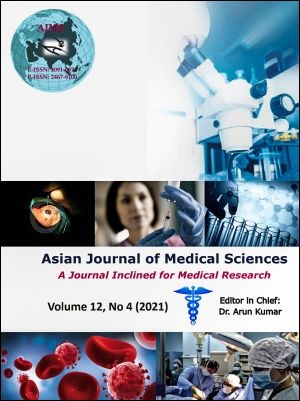Helicobacter pylori Infection: Diagnosis and Therapy
Keywords:
Helicobacter pylori, microaerophilic, antibioticsAbstract
Helicobacter pylori (H. pylori) is a spiral shape gram-negative bacillus and have flagella for motility in mucus environment. H. pylori is microaerophilic organism, slow growing and requires complex growth media in vitro. H. pylori infecting more than 50% populations in worldwide. Prevalence of H. pylori infection is higher in developing countries compared to developed one, and indicates that socioeconomic and living standard may play a major role in the distribution. This study aims to provide an overview of how to diagnose and manage Helicobacter pylori infection. This study reviewed various sources then reviewed as a literature review. The most successful regimens are triple and quadruple combinations, which consist of a PPI and two or three antibiotics for 7 – 14 days. Patient’s compliance and the use of drug to which strain of H. pylori has not acquired resistance are the most important factors in successful H. pylori treatment.
Downloads
Downloads
Published
How to Cite
Issue
Section
License
Authors who publish with this journal agree to the following terms:
- The journal holds copyright and publishes the work under a Creative Commons CC-BY-NC license that permits use, distribution and reprduction in any medium, provided the original work is properly cited and is not used for commercial purposes. The journal should be recognised as the original publisher of this work.
- Authors are able to enter into separate, additional contractual arrangements for the non-exclusive distribution of the journal's published version of the work (e.g., post it to an institutional repository or publish it in a book), with an acknowledgement of its initial publication in this journal.
- Authors are permitted and encouraged to post their work online (e.g., in institutional repositories or on their website) prior to and during the submission process, as it can lead to productive exchanges, as well as earlier and greater citation of published work (See The Effect of Open Access).




